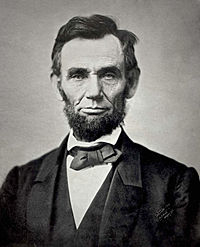Lincoln’s Proclamation of Thanksgiving
President Abraham Lincoln issued the Proclamation of Thanksgiving on October 3, 1863, in the 88th year of independence, in the midst of the Civil War. The Union had won the Battle of Gettysburg just three months earlier.
There was a long American tradition of Thanksgiving before 1863, but on different days in different states, sometimes in recognition of a military victory. There was no single day of Thanksgiving celebrated uniformly across the country. Lincoln’s proclamation set the date.

Lincoln in October 1863
Perhaps prompted by the persistent request of Sarah Josepha Hale, a journalist, Lincoln signed the proclamation which ventures into themes he would return to in his second inaugural address: concern for the soldier, his widow and orphan, unity of the nation, and his certainty that God broadly shapes our history. To these themes Lincoln added gratitude for the consistent bounty of our nation: “…fruitful fields and healthful skies.”
Lincoln’s writings and speeches before the Civil War used “the States” when referring to the country: almost like a collection of independent entities. But once the Civil War began, he changed and began to refer to the country as “the Union” — a single nation. In the proclamation he says, “one heart and one voice by the whole American people.”
He ends by imploring “the Almighty Hand to heal the wounds of the nation and to restore it as soon as may be consistent with the Divine purposes to the full enjoyment of peace, harmony, tranquillity and Union.”
Lincoln’s fervent prayer for America was unity.
